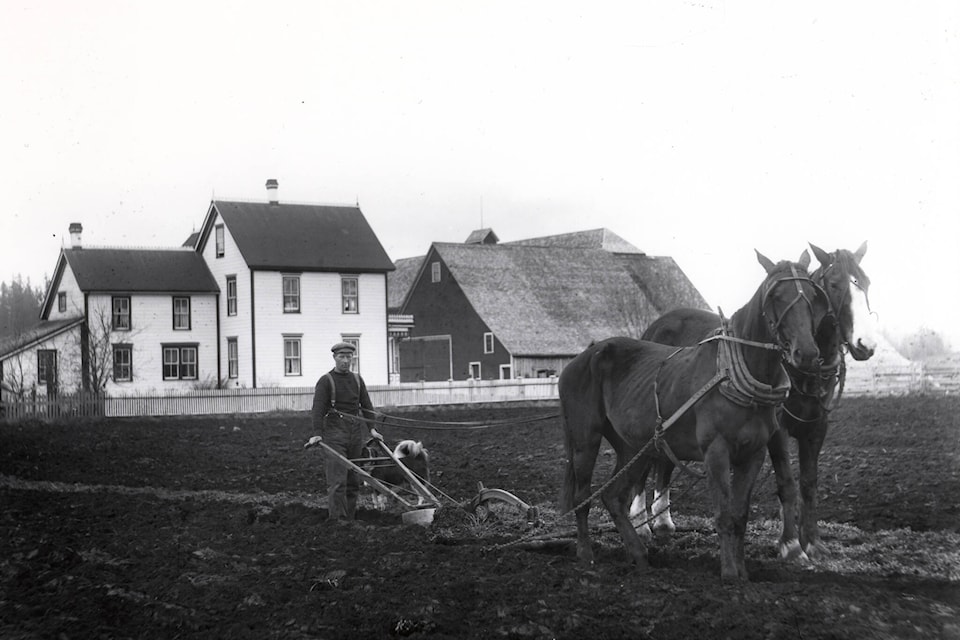This story is part of the Comox Valley Record’s upcoming winter edition of Trio Magazine, published quarterly and will be available mid-December throughout the Comox Valley.
• • •
The Comox Valley Farmers Institute is one of the oldest settler organizations in the community, having first come onto the scene in 1873.
There were no municipalities back then; no government representation - just a few dozen settlers, who actually did not come to the Valley with farming plans at all.
“Most of them were poor. They had come to British Columbia for the gold rush and had high hopes and no capital, and then decided to stay and see how they could manage,” explained historian Jeanette Taylor. “They came across all this fertile land and thought it would be great. But it wasn’t.
“The struggles at that time were many - lack of transportation; a bankrupt colonial government… basically the European settlers were all dropped in here (during the gold rush) then all the services that were to be provided to them were not forthcoming.”
The introduction of the Farmers Institute allowed the families to pool their resources, share information, and support each other.
“They were constantly lobbying for a promised road up-Island that failed, promised ship service that took forever that kind of thing.”
Having no local government representation made times tougher for the original farmers of the Comox Valley.
“The government was reluctant to give them any kind of representation - in fact, they weren’t even part of any electoral district in that first decade, so really had no voice speaking on their behalf,” said Taylor. “They had one government position, which was land recorder, which meant when new people came in, instead of having to go to register for a land grant in Nanaimo or Victoria, they could do it (locally). But that was all they got.”
The original farming lands were on the floodplain of the Courtenay River, before expanding to what was known then as the Upper Prairie and Lower Prairie, along the Tsolum River, which was also hunting and berrying grounds for the Indigenous people, which caused much tension in itself.
“They were, of course, terribly upset, and were asking the settlers ‘Have you no land of your own? You come here and just take ours?’ It had a huge impact on them, losing their hunting areas and their berry-gathering areas. There was animosity throughout, and the farmers themselves, in letters and columns that were sent in to the Colonist newspaper, also were championing the settlement of claims with the Indigenous Peoples. So it’s interesting (how far back) this goes - right from the early stages of settling. And these people still haven’t been compensated and it needs to happen.”
What started as a small group of 40-50 settlers has grown to a membership base of nearly 100 local farmers and their families. Many of the members actively contribute to the food system in the Comox Valley, while others are part of the provincial and national food systems.
Surnames such as the Robb family, the Piercy family, and the Carwithens were prominent in the development of the CVFI.
According to the Comox Valley Farmers Institute website (cvfarmersinstitute.com) the CVFI is “committed to supporting all types of agriculture, farming and farmers in the Comox Valley and we are an active and important contributor and advocate to the continued success of agriculture in the Comox Valley.”
The website is an invaluable tool for local farmers, not only to keep informed of events such as fairs and farm equipment auctions but also as an equipment co-op landing space, where members offer equipment for rent at reasonable prices.
The CVFI is also involved with the school district, as farmers will connect with students through field trip offerings, where students can learn more about the agricultural community.
Taylor said the introduction of the Comox Valley Farmers Institute was integral to the development and sustainability of the agricultural industry in the Comox Valley.
“Yes, I think you could say that. Certainly, that was the start of the Comox Valley, in terms of non-Indigenous settlement. It was almost exclusively based around farming - it started as a farm community by the colonial government.”
